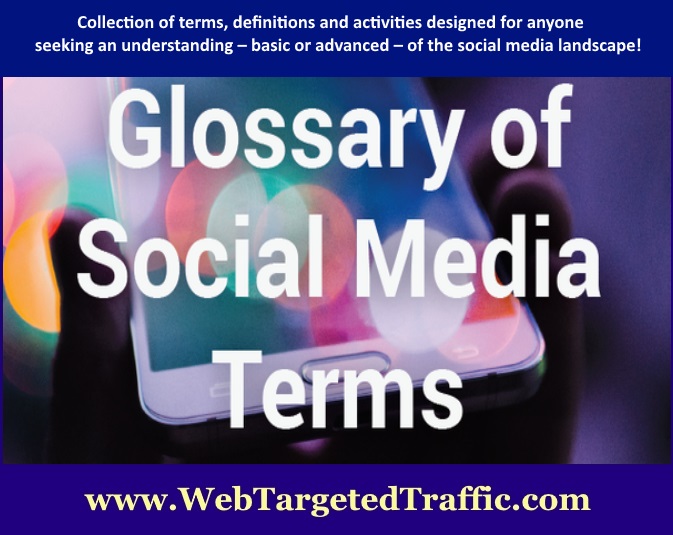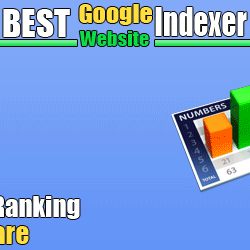With so many social media platforms in existence it can be difficult to keep track of all the different social media terms. In this post we explain some common terminology that crops up when discussing social media, which you can use as a handy reference tool in 2019 and beyond.
This glossary is a collection of terms, definitions and activities designed for anyone seeking an understanding – basic or advanced – of the social media landscape.
Table of Contents
General terms
API – Application Programming Interface: How computer programs “talk” to each other. It’s what allows us to do things like book a flight online through a travel website. API is what takes the information we’ve inputted in the travel website (i.e. dates of travel, number of passengers, baggage etc.), communicates with all the different airline databases to check for availability based on the criteria we input, and comes back to us with options from those airlines that fit our criteria. In the realm of social media, API is what allows advertisers and businesses to interact with social media users through social platforms and collect data from the social networks.
Algorithm – A sequence of instructions (formulas) telling a computer what to do. In the social sphere, algorithms determine things like what content appears in a social media newsfeed and how often. Facebook is well known for frequently changing it’s algorithms in an attempt to tailor the content popping up in people’s newsfeeds and making sure it’s as relevant to the individual as possible. Twitter, Instagram, and other social media sites also use algorithms to make sure their users are satisfied with the relevance of the content they see.
Avatar – In a social media context, an icon or figure representing a particular person/user.
Bio – A self-generated public description of the social media user, often included next to or underneath the user’s name and photo, to help introduce themselves to other users.
Blog – Both a verb and a noun: 1) Noun: A website or page upon which an individual or organization publishes regularly scheduled content on a particular topic or theme, and can include articles, photos, and videos, among other things. 2) Verb: The act of adding new material to a blog.
Blogosphere – Used to describe the overall or total blogging environment on the Internet, along with all the conversations and content connected to that environment.
Blogroll – Found on a blog, a list of hyperlinks to other blogs or websites.
Clickbait – A term to describe headlines, often sensationalist in nature, whose sole purpose is to encourage people to engage and click on a link.
Clickthrough – A common social media metric calculated by looking at the number of people who click a link in a piece of content divided by the number of people who saw the content.
Comments – Typically, user-generated feedback on an online news article or blog/social media post (usually appearing at the foot of the article or post).
Community Manager – An employee at an organization or company that works to build, grow and manage online communities and social media engagement around a brand or issue.
Connection – In the context of a social network, a connection is a link between two users. Depending on the social networking service, a connection can allow a user to view a connected user’s profile, view the user’s content, view the user’s other connections, etc. Each social network has it’s own unique terminology for connections (e.g. Facebook refers to them as friends, LinkedIn refers to them as connections and Twitter refers to them as followers).
Content – Any kind of meaningful information (text, photos, videos, audio, etc.) on the Internet.
Content management system (CMS) – A program designed to allow a user to manage a website’s content creation, modification, and removal without having to write HTML markup. Most commonly used to run websites which require frequent edits, such as blogs or news sites.
Conversation – The back-and-forth exchange of information between users.
Conversion Rate – The number of people who completed a specific desired action in a social media post. (A ‘desired action’ can include things such as retweeting, commenting, “Liking” etc.)
Crowdsource – Using the collective brainpower, enthusiasm, skills and opinions of large numbers of people in an online setting to solve problems, build solutions, and to source ideas and resources.
Embed – To integrate data into the body of a file or document, in the form of a code. Can be used to share multimedia, sounds, fonts, and (unfortunately) viruses.
Engage – Attracting users’ attention and actively involving them in a conversation.
Engagement Rate – A social media metric to describe the number of interactions users have had with a piece of content (i.e. “Liking”, retweeting, commenting etc.)
Facebook – Social media platform founded in 2004 by Mark Zuckerberg. Connects friends, family, and acquaintances on a platform that allows them to post and share content (text, photos, videos), status updates (text descriptions of how people are feeling, what they are doing, or a thought they’d like to highlight), and more. Currently the most globally popular social media platform, with
Feed – A news feed of updates and content posted by other social media users, including individuals and businesses. Can include content from other users and businesses/organizations you have chosen to connect with, as well as content and advertisements from those who have paid the social media network to have it appear in your feed. Most social media algorithms use the data they collect on their users to ensure the content appearing in newsfeeds, whether paid or not, is as tailored and relevant to the individual as possible.
Follow – Subscribing to the updates of fellow users. Typically applies to Twitter and Instagram.
Follower – A subscriber of another user’s feed. Typically applies to Twitter and Instagram.
Following – Users whose feeds you subscribe to. Typically applies to Twitter and Instagram.
Forums – Typically, an online message board on a particular niche topic or subject that features an active user base, but does not include most of the advanced social features of most mainstream social media platforms such as Facebook or Twitter.
GIF – A digital image that moves like a very short animation. Acronym for Graphics Interchange Format,
Google+ – Google’s social network. Like Facebook, Google+ connects friends, family, and acquaintances and allows them to share content.
Handle – Unique name applied to each user. Handles are typically prepended with the “@” symbol. Typically applies to Twitter and Instagram users.
Hashtag – A mechanism used to group posts under the same topic, by including a specific word preceded by the # symbol (a word, or tag, denoted with a hash: hashtag). Hashtags are used commonly on social media platforms including Twitter, Facebook, and Instagram.
Impressions – Otherwise known as “views”. Refers to the point that a piece of content has been viewed once by a user. Often used as a metric by advertisers when looking at the performance of a digital advertisement.
Influencer – An individual user who has a significant following on a social media network based on their knowledge, expertise, or opinions in a particular topic or field. Influencers typically have the power to affect the opinions and purchasing decisions of their followers.
Instagram – A photo-sharing social media platform, targeted towards mobile users, which allows users to take photos, alter them with filters and other effects, and post them to be viewed publicly (available to all Instagram users), or privately (available only to a user’s followers).
Instant Messaging – Form of digital real-time, direct, text-based messaging between two or more people.
Klout: Is an online and mobile application that ranks users according to their social influence.
LinkedIn – Business-focused social media platform which allows users to network and share professional skills and experience, relevant business content, and professional updates and musings.
Listening – Monitoring how a specific company, brand, product, or person is being discussed and/or perceived on the Internet. Also referred to as social media monitoring.
Live-blogging – To blog about a particular event as it is happening, in real-time.
Live-Streaming – Delivering video content over the internet in real-time. Many social media platforms allow for live-streaming or live-streaming mechanisms and apps.
Lurker – A user of a social media site or message board who consumes information readily but does not regularly or actively contribute via posts, conversations or other means.
Meme – Typically an image with text overlay to describe a thought, joke, idea, or concept.
Microblogging – Refers to blogs that focus on smaller updates. Often facilitated by a social network platform, examples including Twitter and Tumblr. Some focus on video or picture updates, while others restrict posts to a certain number of characters.
Newsjacking – Capitalizing on a news story to increase engagement with a piece of content, brand, or product. Often a strategy employed by marketers to increase sales and brand awareness.
Outlink – A link found on your website pointing to another website.
Pinterest – Photo sharing social media platform where users can upload, save, and categorize posts (known as “pins”) in themed collections (known as “boards”). Users can search other people’s pins and boards in order to explore content and add to their own boards.
Reddit – A social news aggregation website where users can upload, rate, comment and discuss content. Content (including comments) that have better ratings are more visible to other users. Content is organized into forums (reddits) and sub-forums (subreddits) based on topic.
RSS – Really Simple Syndication. Allows users to access regularly published content from a single location (other than the website the content is originally published on). RSS feeds publish content that is frequently updated (i.e. blogs, videos, podcasts etc.) in a standardized format.
Sentiment – The attitude or opinion of the writer and their work.
SEO – Search Engine Optimization is used to increase the amount and quality of traffic to a website from search engines (such as Google or Yahoo!).
Share (verb) – A one-click way of sharing a status, link, or image with other users.
Snapchat – Social media mobile app that allows users to send and receive photos and videos that are visible for a pre-determined amount of time. Once the allotted time-frame ends, the receiver can no longer see the video or photo.
Thread – An individual conversational trail within a social media platform, forum or bulletin board, typically beginning with an original post and continuing with comments and conversation attached to that original post.
Trending – The most popular topics and hashtags on a social media site. These often become clickable links that users can select to view or join the larger conversation.
Troll – A user who is known for purposely posting inflammatory content with the intent of creating controversy on a social media platform.
Tumblr – A micro-blogging platform that allows users to post multi-media content to their blog. Users can also follow other Tumblr blogs.
Twitter – A micro-blogging platform where users can post thoughts, links, photos, and updates, in 280 characters or less. Users can also engage with other user’s posts and content.
User-Generated Content – Content that is created by consumers/customers.
Viral – Used to describe content that has attained significant, wide-spread attention online.
Vlogging – Content that uses video as it’s main medium to convey thoughts, updates, and experiences of the user.
Webinar – A live seminar hosted over the internet. Allows interaction between the presenter and the audience.
Wiki – A website combining the ongoing work of many authors, allowing users to modify the content of previous authors.
YouTube – A video sharing website where users can upload, comment, and share videos with other users and across other social media networks.
Apps – Mini-programs, such as games, made by third-parties to run within the Facebook system.
Cover Photo – The large, horizontal photo at the top of a Facebook profile.
Fan – A user who follows and receives updates from a particular Facebook page. The user must “like” the page in order to become a fan of it.
Fan/company/brand/group page – A bounded collection of individuals sharing something in common, be it fandom of a particular band, musician or brand, interests, hobbies, values or other identifiable differentiator. Some groups are private, but most are public and can be joined by any users on the site. Individuals can also be invited to these pages by current members.
Friend – A member of your Facebook contact list.
Friend/unfriend (verb) – To add or remove someone from your Facebook contact list.
Like – A one-click option allowing people to denote their enjoyment of a post.
Organic Reach – The number of people who saw your post without paying to promote it.
Paid Reach – The number of people who saw your post due to paid promotion.
Places – Geographic locations a user has visited, based on geolocation/geotagging.
Poke – A one-click option sending a notification to a friend or friend of a friend that they’ve been “poked”.
Post – A post made in the social networking site, Facebook.
Privacy settings – Settings allowing a user to decide what content other users are able to view, and who is able to contact them.
Profile – A user’s personal, custom page.
Reach – The total number of people who saw your post (includes organic and paid reach).
Recommended pages – A list of pages a user may be interested in, based on previous page views, check-ins, likes, and friends. Generated by Facebook’s algorithms.
Sponsored/Boosted content – Paid advertisements targeted towards specific audiences, based on demographics chosen by the advertisers.
Status update – Users can say what’s on their mind, check-in, tag who they’re with, and/or upload photos. The status update will appear on the newsfeed of their friends.
Tag – A link to a user’s profile. Users can be “tagged” in photos or status updates.
Wall – The space on a profile or fan page where users can share posts, photos and links.
Direct message (DM) – An instant, direct and private message from one Twitter user to another that appears in a user’s “messages” box. Not to be confused with a tweet, which appears on users’ timelines and is usually public.
Header Image – The large, horizontal photo at the top of a Twitter profile.
Lists – A grouping mechanism where users can group other users into identifiable batches based on pre-defined criteria (for example: Journalist/media lists, PR practitioner lists, analyst lists, etc.).
Live-tweeting – The same as “live blogging”, but using tweets to tell the story in real-time instead of blog posts.
Mention – Whenever a Twitter user includes another user’s handle (@username) in their post in order to draw the attention of that person to content and or start a conversation.
Promoted – Paid advertisements targeted towards specific audiences, based on demographics chosen by the advertisers.
Protected tweets – When a Twitter user restricts viewing of their tweets only to followers they have personally approved.
Retweet (RT) – When other Twitter users re-post a post made by another user.
Timeline – Similar to Facebook, a news feed of updates posted or retweeted by those a user follows.
Tweet – A post on popular micro-blogging site Twitter.
YouTube
Channel – A user’s custom homepage for their account. Includes account information, subscribers, and shared videos.
Like – A one-click option allowing people to denote their enjoyment of a video.
Views – The number of times a YouTube video has been watched.
1st degree contact – You are connected to this person directly.
2nd degree contact – This person knows one of your 1st degree contacts (two degrees of separation).
3rd degree contact – This person knows one of your 2nd degree contacts (three degrees of separation).
Banner Image – The large, horizontal photo at the top of a LinkedIn profile.
Companies – Pages providing information on a company, what they do, job opportunities, and present and past employees.
Connections – A list of contacts who have been added to your personal network.
Endorsements – A list of skills fellow users have suggested you possess.
Groups – A place for users to connect with others in related fields or with similar interests.
Recommendations – A written reference by a LinkedIn member, usually recognizing a colleague, student, or manager.
SlideShare – LinkedIn-hosted social network meant for sharing presentations and documents.
Board – A category that you create in order to organize your pins. For example, a board titled, “my dream wedding” could host pins related to weddings.
Pin – Any image, website, or piece of content included on a Pinterest Board.
Pinner – The technical term for someone who is pinning content to a board.
Repin – Like a Retweet, Repinning is the act of sharing something that someone else has already pinned.
AMA – Ask me anything. A particular style of reddit post, in which the poster opens themselves up to questions and answers them in the comments.
TL;DR – Too long, didn’t read. Used when someone summarizes a post they consider too long to read.
¤¤¤¤¤¤¤¤¤¤¤¤¤¤¤¤¤¤¤¤¤¤¤¤¤
A
1. AddThis – AddThis is a web-tracking technology company that offers a wide range of social media and content tools — from responsive sharing buttons to custom follow buttons to recommended content plugins — designed to help you increase engagement on your website and earn more followers on social media.
2. AMA – AMA is an acronym for “ask me anything,” which originated in a popular subreddit where users will use the term to prompt questions from other users. Since its inception, the term has gone on to be used in other online social settings, such as this discussion on Inbound.org.
3. Algorithm – An algorithm is a set of formulas developed for a computer to perform a certain function. This is important in the social sphere as the algorithms sites like Facebook and Google use are critical for developing content promotion strategies.
4. Application Programming Interface (API) – An API is a documented interface that allows one software application to interact with another application. An example of this is the Twitter API.
5. Avatar – An avatar is an image or username that represents a person online, most often within forums and social networks.
B
6. Bitly – Bitly is a free URL shortening service that provides statistics for the links users share online. Bitly is popularly used to condense long URLs to make them easier to share on social networks such as Twitter.
7. Bio – A bio on social media refers to a short bit of explainer text that explains who the user is. To see some examples, check out this roundup of some of the most amusing bios on Twitter.
8. Blog – Blog is a word that was created from two words: “web log.” Blogs are usually maintained by an individual or a business with regular entries of content on a specific topic, descriptions of events, or other resources such as graphics or video. “Blog” can also be used as a verb, meaning to maintain or add content to a blog.
9. Blogger – Blogger is a free blogging platform owned by Google that allows individuals and companies to host and publish a blog typically on a subdomain. Example: yourblogname.blogspot.com
10. Blog Talk Radio – Blog Talk Radio is a free web application that allows users to host live online radio shows.
11. BoardReader – BoardReader is a free search engine that allows users to search for keywords only in posts and titles of online forums, a popular form of social networking.
12. Bookmarking – Bookmarking online follows the same idea of placing a bookmark in a physical publication — you’re simply marking something you found important, enjoyed, or want to continue reading later. The only difference online is that it’s happening through websites using one of the various bookmarking services available, such as Pocket, or right within your browser.
C
13. Canva – Canva is an easy-to-use design tool for non-designers and designers alike. The tool offers several templates that adhere to the required dimensions for sharable social images on Twitter, Facebook, Instagram, etc.
14. Chat – Chat can refer to any kind of communication over the internet but traditionally refers to one-to-one communication through a text-based chat application, commonly referred to as instant messaging (IM) applications.
15. Circles – Circles are clusters of a user’s friends, colleagues, family, or connections on Google+. You get to choose who goes in what Circle, and when you want to share content with only these individuals, you include that specific Circle in your post’s sharing options.
16. Clickbait – Clickbait is a term to describe marketing or advertising material that employs a sensationalized headline to attract clicks. They rely heavily on the “curiosity gap” by creating just enough interest to provoke engagement.
17. Clickthrough Rate – Clickthrough rate is a common social media metric used to represent the number of times a visitor clickthrough divided by the total number of impressions a piece of content receives.
18. Collective Intelligence – Collective intelligence is a shared intelligence that emerges from the collaboration and competition of many individuals and appears in consensus decision-making in social networks.
19. Comment – A comment is a response that is often provided as an answer or reaction to a blog post or message on a social network.
20. Compete – Compete is a web-based application that offers users and businesses web analytics. It also enables people to compare and contrast the statistics for different websites over time.
21. Community Manager – The community manager is responsible for building and managing the online communications for a business in an effort to grow an online community.
22. Connections – The LinkedIn equivalent of a Facebook ‘friend’ is a ‘connection.’ Because LinkedIn is a social networking site, the people you are connecting with are not necessarily people you are friends with, but rather professional contacts that you’ve met, heard speak, done business with, or know through another connection. Connections are categorized by: 1st degree, 2nd degree, and 3rd degree.
23. Conversion Rate – Conversion rate refers to a common metric tracked in social media that is the percentage of people who completed an intended action (i.e. filling out a form, following a social account, etc.).
24. Craigslist – Craigslist is a popular online commerce site in which users sell a variety of goods and services to other users. The service has been credited for causing the reduction of classified advertising in newspapers across the United States.
25. Creative Commons – Creative Commons is a nonprofit corporation dedicated to making it easier for people to share and build upon the work of others, consistent with the rules of copyright. It provides free licenses and other legal tools to mark creative work with the freedom the creator wants it to carry, so others can share, remix, use commercially, or any combination thereof.
26. Crowdsourcing – Crowdsourcing, similar to outsourcing, refers to the act of soliciting ideas or content from a group of people, typically in an online setting.
D
27. Delicious – Delicious is a free online bookmarking service that lets users save website addresses publicly and privately online so they can be accessed from any device connected to the internet and shared with friends.
28. Digg – Digg is a social news website that allows members to submit and vote for articles. Articles with the most votes appear on the homepage of the site and subsequently are seen by the largest portion of the site’s membership, as well as other visitors.
29. Direct Message – Direct messages — also referred to as “DMs” — are private conversations that occur on Twitter. Both parties must be following one another to send a message.
30. Disqus – Disqus is a comment system and moderation tool for your site. This service lets you add community management and social web integration to any site on any platform.
E
31. Ebook – An ebook is an electronic version of a book. However, most ebooks are not actually available in print (unless you print them). These are typically published in PDF form. For marketers, ebooks commonly serve as lead generating content — people must fill out a form to receive their ebook copy.
32. Employee Advocacy – Employee advocacy refers to the act of employees using their own social presence to increase the reach of the company and its content.
33. Endorsement – An endorsement on LinkedIn refers to an instance in which another LinkedIn user recognizes you for one of the skills you have listed on your profile.
34. Engagement Rate – Engagement rate is a popular social media metric used to describe the amount of interaction — likes, shares, comments — a piece of content receives.
35. Eventbrite – Eventbrite is a provider of online event management and ticketing services. Eventbrite is free if your event is free. If you sell tickets to your event, Eventbrite collects a fee per ticket.
F
36. Facebook – Facebook is a social media platform founded by Mark Zuckerberg in 2004. The site connects people with friends, family, acquaintances, and businesses from all over the world and enables them to post, share, and engage with a variety of content such as photos and status updates. The platform currently boasts around 1.49 billion active users.
37. Fans – Fans is the term used to describe people who like your Facebook Page.
38. Favorite – Represented by the small star icon on Twitter, favoriting a tweet signals to the creator that you liked their content or post.
39. Flash Mob – A flash mob is a large group of people who assemble suddenly in a public place, perform an unusual and pointless act for a brief time, then quickly disperse. The term flash mob is generally applied only to gatherings organized via telecommunications, social media, or viral emails.
40. Flickr – Flickr is a social network for online picture sharing. The service allows users to store photos online and then share them with others through profiles, groups, sets, and other methods.
41. Forums – Also known as a message board, a forum is an online discussion site. It originated as the modern equivalent of a traditional bulletin board, and a technological evolution of the dial-up bulletin board system.
42. Follower – In a social media setting, a follower refers to a person who subscribes to your account in order to receive your updates.
43. Follow Friday (#ff) – Follow Friday is a trend via the hashtag #ff every Friday on Twitter. Users select other usernames and tweet them with #ff in their post, meaning they recommend following those Twitter users. There is debate whether this trend is past its prime.
44. Friends – Friends is the term used on Facebook to represent the connections you make and the people you follow. These are individuals you consider to be friendly enough with you to see your Facebook profile and engage with you.
G
45. GaggleAMP – GaggleAMP is a social media marketing platform that provides businesses with the ability to leverage its employee’s online presence to increase brand awareness and expand its reach.
46. Geotag – A geotag is the directional coordinates that can be attached to a piece of content online. For example, Instagram users often use geotagging to highlight the location in which their photo was taken.
47. GIF – GIF is an acronym for Graphics Interchange Format. In social media, GIFs serve as small-scale animations and film clips. (Check out this round up of reaction GIFs used to illustrate our excitement when Facebook announced that they were supporting their functionality.)
48. Google Chrome – Google Chrome is a free web browser produced by Google that fully integrates with its online search system as well as its other applications.
49. Google Documents – Google Documents is a group of web-based office applications that includes tools for word processing, presentations, spreadsheet analysis, etc. All documents are stored and edited online and allow multiple people to collaborate on a document in real-time.
50. Google+ – Google+ is Google’s social network. It serves as a platform for users to connect with friends, family, and professionals while enabling them to share photos, send messages, and engage with content. Google uses the “+1” to serve as the equivalent to a Like on Facebook or Instagram.
H
51. Handle – Handle is the term used to describe someone’s @username on Twitter. For example, HubSpot’s Twitter handle is @HubSpot.
52. Header image – A header image refers to the large photo displayed at the top of your profile on Twitter. The header image is also commonly referred to as the banner image on LinkedIn or the cover image on Facebook.
53. Hangout – A Hangout is a video service on Google+ that allows you to video chat with up to 10 Google+ users are a time. You can name these chats, watch YouTube videos during them, open a Google Doc with colleagues, and much more.
54. Hashtag – A hashtag is a tag used on a variety of social networks as a way to annotate a message. A hashtag is a word or phrase preceded by a “#” (i.e. #InboundMarketing). Social networks use hashtags to categorize information and make it easily searchable for users.
55. HTML – HyperText Markup Language (HTML) is a programming language for web pages. Think of HTML as the brick-and-mortar of pages on the web. It provides content and structure while CSS supplies style. HTML has changed over the years, and it is on the cusp of its next version: HTML5.
I
56. Impressions – An impression refers to a way in which marketers and advertisers keep track of every time ad is “fetched” and counted.
57. Inbound Marketing – Inbound marketing is a style of marketing that uses permission-based marketing techniques to get found by potential customers, convert them into leads, customers, and advocates, and analyze the process along the way. Inbound marketing leverages tactics and tools such as SEO, blogging, social media, lead generation, email marketing, lead nurturing, marketing automation, surveys, personalization, and CRM.
58. Instagram – Instagram is a photo sharing application that lets users take photos, apply filters to their images, and share the photos instantly on the Instagram network and other social networks like Facebook, Flickr, Twitter, and Foursquare. The app is targeted toward mobile social sharing, and has gained more than 300 million users.
59. Instant Messaging – Instant messaging (IM) is a form of real-time, direct text-based communication between two or more people. More advanced instant messaging software clients also allow enhanced modes of communication, such as live voice or video calling.
K
60. Klout – Klout is a measure of social influence. The service allows users to connect various social accounts such as Facebook, Flickr, YouTube, etc., and then provides every user with his or her Klout score. The score is out of 100 — the higher the score, the more influence it estimates you have in the social world.
L
61. Like – A Like is an action that can be made by a Facebook or Instagram user. Instead of writing a comment or sharing a post, a user can click the Like button as a quick way to show approval.
62. Link Building – Link building is an aspect of search engine optimization in which website owners develop strategies to earn links to their site from other websites with the hopes of improving their search engine ranking. Blogging has emerged as a popular method of link building.
63. LinkedIn – LinkedIn is a business-oriented social networking site with over 380 million members in over 200 countries and territories. Founded in December 2002 and launched in May 2003, it is mainly used for professional networking.
64. LinkedIn Publishing – LinkedIn’s publishing platform functions as a place where members can publish long-form posts that related to their professional interests and expertise. While this capability used to be limited to LinnkedIn Influencers only, the platform was opened up to everyone in 2014.
65. LinkedIn SlideShare – LinkedIn SlideShare is an online social network for sharing presentations and documents. Users can favorite and embed presentations as well as share them on other social networks such as LinkedIn, Twitter, and Facebook.
66. Listed – The act of being “listed” on Twitter refers to when a user curates a custom list of Twitter users to more easily keep tabs on their tweets.
67. Live streaming – Live streaming is the act of delivering content over the internet in real-time. This term was popularized in social media by apps such as Meerkat and Periscope.
68. Lurker – A lurker online is a person who reads discussions on a message board, newsgroup, social network, or other interactive system, but rarely or never participates in the discussion.
M
69. Mashup – A content mashup contains multiple types of media drawn from pre-existing sources to create a new work. Digital mashups allow individuals or businesses to create new pieces of content by combining multiple online content sources.
70. Meerkat – Meerkat is an app that allows users to stream live video from their mobile devices.
71. Meme – A meme on the internet is used to describe a thought, idea, joke, or concept that’s widely shared online. It is typically an image with text above and below it, but can also come in video and link form. A popular example is the “I Can Has Cheezburger?” cat meme that turned into an entire site of memes.
72. Mention – A mention is a Twitter term used to describe an instance in which a user includes someone else’s @username in their tweet to attribute a piece of content or start a discussion.
N
73. Native Advertising – Native content refers to a type of online advertising in which the ad copy and format adheres to the format of a regular post on the network it’s being published on. The purpose is to make ads feel less like ads, and more like part of the conversation.
74. News Feed – A news feed is literally a feed full of news. On Facebook, the News Feed is the homepage of users’ accounts where they can see all the latest updates from their friends. The news feed on Twitter is called Timeline.
75. Newsjacking – Newsjacking refers to the practice of capitalizing on the popularity of a news story to amplify your sales and marketing success.
P
76. Pandora – Pandora is a social online radio station that allows users to create stations based on their favorite artists and types of music.
77. Periscope – Periscope is a social video app that allows users to broadcast live video from wherever they are. App users also have the ability to engage with others videos, browse live or recent broadcasts, and follow users to receive notifications.
78. Permalink – A permalink is an address or URL of a particular post within a blog or website that remains indefinitely unchanged.
79. Pinterest – Pinterest is a photo sharing social network that provides users with a platform for uploading, saving, and categorizing “pins” through collections called “boards.” Boards are typically organized by theme, such as: Food & Drink, Women’s Fashion, Gardening, etc. Users have the ability to “pin” and “repin” content that they like to their respective boards.
80. Podcast – A podcast is a series of digital media files, usually audio, that are released episodically and often downloaded through an RSS feed.
81. Pocket – Pocket is an app that enables users to manage a reading list of articles they’ve saved from the internet to read later. Pocket has an open API that allows it to integrate with over 500 applications including social networks like Twitter.
82. PPC – PPC is an acronym for pay per click. Pay per click is an online advertising model in which advertisers display ads on various websites or search engines and pay when a visitor clicks through. Bid-based PPC involves an auction in which advertisers compete with other advertisers by setting the max bid — or highest amount they’re willing to pay — for each click. Each time a visitor triggers the ad spot, the auction process pans out to select which ad will be displayed.
Q
83. Quantcast – Quantcast provides website traffic and demographics for websites. The tool is primarily used by online advertisers looking to target specific demographics.
R
84. Real-Time Search – Real-time search is the method of indexing content being published online into search engine results with virtually no delay.
85. Real-Time Marketing – Real-time marketing is a strategy that requires marketers to publish timely content as news breaks. For example, Oreo tweeted this quick-witted response to the 2013 Super Bowl blackout as it was unfolding.
86. Recommendation – A recommendation on LinkedIn is a term used to describe a written note from another LinkedIn member that aims to reinforce the user’s professional credibility or expertise.
87. Reddit – Reddit is a social news site that contains specific, topic-oriented communities of users who share and comment on stories.
88. Reply – A reply is a Twitter action that allows a user to respond to a tweet through a separate tweet that begins with the other user’s @username. This differs from a mention, because tweets that start with an @username only appears in the timelines of users who follow both parties.
89. Retargeting – Retargeting is an online marketing and advertising technique that allows marketers to display ads to people who have visited their website or are part of their contacts database. For more on how a retargeting campaign works, check out this beginner’s guide.
90. Retweet – A retweet is when someone on Twitter sees your message and decides to re-share it with his or her followers. A retweet button allows them to quickly resend the message with attribution to the original sharer’s name.
91. RSS Feed – RSS is a family of web feed formats used to publish frequently updated content such as blogs and videos in a standardized format. Content publishers can syndicate a feed, which allows users to subscribe to the content and read it when they please from a location other than the website (such as Feedly or other RSS readers).
92. RSS Reader – An RSS reader allows users to aggregate articles from multiple websites into one place using RSS feeds. The purpose of these aggregators is to allow for a faster and more efficient information consumption.
S
93. Search Engine Optimization – Search engine optimization is the process of improving the volume or quality of unpaid traffic to a website from search engines.
94. Selfie – A selfie is a self-portrait that is typically taken using the reverse camera screen on a smartphone or by using a selfie stick (a pole that attaches to your camera). Selfies are commonly shared on social media networks like Instagram, Twitter, and Facebook using the hashtag #selfie.
95. Skype – Skype is a free program that allows for text, audio, and video chats between users. Additionally, users can purchase plans to place phone calls through their Skype account.
96. Snapchat – Snapchat is a social app that allows users to send and receive time-sensitive photos and videos known as “snaps,” which are hidden from the recipients once the time limit expires (images and videos still remain on the Snapchat server). Users can add text and drawings to their snaps and control the list of recipients in which they send them to.
97. Snapchat Story – A Snapchat story is a string of Snapchats that lasts for 24 hours. Users can create stories to be shared with all Snapchatters or just a customized group of recipients.
98. Social Inbox – Social Inbox is an app in the HubSpot software that plugs into your contacts database and allows users to optimize their social monitoring, publishing, and analysis.
99. Social Media Monitoring – Social media monitoring is a process of monitoring and responding to mentions related to a business that occur in social media.
100. Social Proof – Social proof refers to a psychological phenomenon in which people seek direction from those around them to determine how they are supposed to act or think in a given situation. In social media, social proof can be identified by the number of interactions a piece of content receives or the number of followers you have. The thought is that if others are sharing something or following someone, it must be good.
101. Social Selling – Social selling is a sales concept in which representatives leverage the power of social communication to engage with prospects by answering their questions, providing helpful content, clarifying information, etc.
102. StumbleUpon – StumbleUpon is a free web-browser extension that acts as an intelligent browsing tool for discovering and sharing web sites.
T
103. Tag – Tagging is a social media functionality commonly used on Facebook and Instagram that allows users to create a link back to the profile of the person shown in the picture or targeted by the update.
104. Trending Topic – Trending topics refer to the most talked about topics and hashtags on a social media network. These commonly appear on networks like Twitter and Facebook and serve as clickable links in which users can either click through to join the conversation or simply browse the related content.
105. Troll – A troll or internet troll refers to a person who is known for creating controversy in an online setting. They typically hang out in forums, comment sections, and chat rooms with the intent of disrupting the conversation on a piece of content by providing commentary that aims to evoke a reaction.
106. Tumblr – Tumblr is a microblogging platform that allows users to post text, images, video, audio, links, and quotes to their blog. Users can also follow other blogs and repost other users’ content to their own blog.
107. Twitter – Twitter is a real-time social network that allows users to share 140-character updates with their following. Users can favorite and retweet the posts of other users, as well as engage in conversations using @ mentions, replies, and hashtags for categorizing their content.
108. Tweepi – Tweepi is a social media management tool that provides users with a platform for simplifying the way they manage their social following. It’s typically used for mass following or unfollowing a group of people based on certain criteria.
109. Tweetdeck – Tweetdeck is a Twitter tool that provides users with a way to manage their Twitter presence through custom columns. The platform integrates with the Twitter API to allow users to both send and receive tweets.
110. Twitterverse – Also referred to as the Twittersphere, Twitterverse is a nickname for the community of users who are active on Twitter.
U
111. User-Generated Content – User-generated content is content — blogs, videos, photos, quotes, etc. — that is created by consumers. Marketers typically tap into their audience in an online setting to collect this type of content to support a campaign or initiative.
V
112. Vine – Founded in 2012, Vine is a social video sharing service in which users create and engagement with short-form, six-second video clips. Videos published through the service are easily shared across other social platforms such a Twitter and Facebook.
113. Viral – Viral is a term used to describe an instance in which a piece of content — YouTube video, blog article, photo, etc. — achieves noteworthy awareness. Viral distribution relies heavily on word of mouth and the frequent sharing of one particular piece of content all over the internet.
114. Vlogging – Vlogging or a vlog is a piece of content that employs video to tell a story or report on information. Vlogs are common on video sharing networks like YouTube.
W
115. Webinar – A webinar is an online seminar or presentation that is hosted by an individual or a company. Most often, the host requires attendees to fill out a form before granting them access to stream the audio and slides. In marketing, webinars are held to educate audiences about a particular topic while opening up the floor for a discussion to occur on social media using the webinar’s unique hashtag.
Y
116. Yammer – Yammer is an private social network for companies which is often described as “Facebook for business.” It is intended to be used by organizations for internal communication purposes.
Z
117. Zapier – Zapier is a software that leverages “zaps” to connect apps and provides users with a way to automate tasks. Zaps are automations that contain both Triggers and Actions. For example, you can connect your Twitter with your Evernote to save your favorited tweets to a folder, or connect Facebook and Twitter to tweet posts from a Facebook Page.
#
@
A ubiquitous symbol thanks to its prevalence in email addresses, the “at” symbol is one of the most important characters in how we communicate today. If you don’t see why, well, don’t @ me.
#
That’s an octothorpe. Also known as a pound sign, if you’ve ever used a phone. Also known as a hashtag. Also, it kind of looks like a tic-tac-toe board.
Are there any other social media terms that you think are missing from this list? Leave your suggestions below and we will add them to our glossary.














